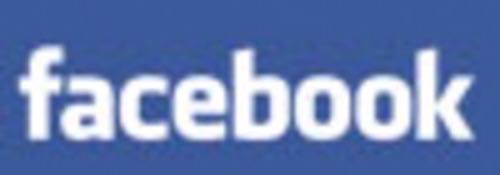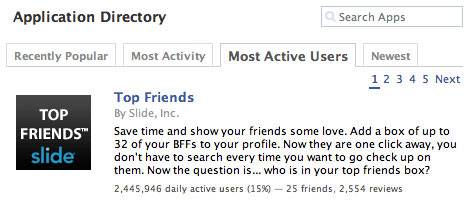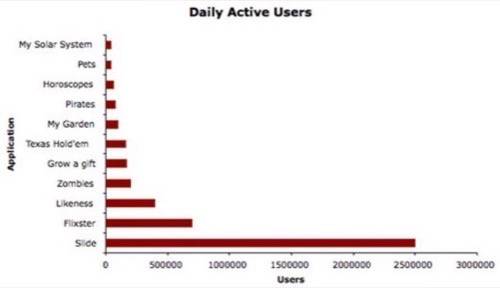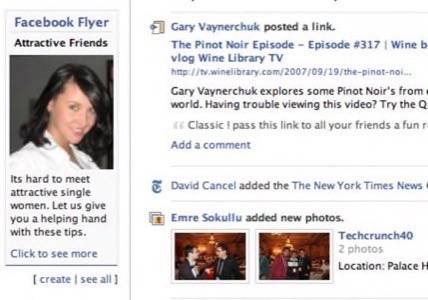In our recent post,
MySpace: Hot or Not?, we took a look at the social networking
giant to understand what’s going on with the site. We found that while ‘MySpace‘ is slowing down as a trend, the site
is alive and kicking and people are actively communicating (although some communication is focused on fairly questionable topics).
While doing research for that article, the difference in approach between MySpace and its major rival Facebook was particularly striking.

While Facebook built elegant infrastructure and a clean look, MySpace allowed people to create a seemingly incomprehensible
zoo of information on their pages. But after a closer look, one begins to see why MySpace remains attractive to so many users. MySpace puts communication and self-expression
at the forefront, with communication with your friends really being the point of each page. Facebook, meanwhile, showcases different applications installed by its users on their profiles pages, and pushes one of its primary communication features, the Wall,
to the bottom of the page.
At the center of Facebook today is the news feed – a dynamic listing of the collective activity of all
your friends. The news feed shows updates from your friends, prompting you to explore their profiles and the site. When someone adds an application
or befriends someone new or posts a video or a picture, the news feed directs you to their profile page to check it out. It may seem
like these features and their minimalist design make Facebook simpler and easier to use than MySpace, but is it?
Communication – The Very Point Of Social Networks
The primary goal of a social network is to connect people, to simplify their communication, and to help them stay in touch.
Before the rise of social networking, online communication occured via email, chat and forums. The early social networks made their
case by making communication easier. In particular, MySpace made it easy to communicate by leaving messages on people’s profile pages.
For many users, this was more convenient than sending email, but the reason this communication style really took off was
because others could see the messages and become engaged – conversations between groups of users could emerge.

The communication on Facebook is not as simple. First, the message board is typically pushed way down a users’ profile page, below
tens of other applications. Just comparing the activity between random MySpace and Facebook profiles you see that
MySpace members communicate with each other much more actively via messages. Second, Facebook has its own in-network private messaging system. The idea itself is fine, but it can’t possibly compete with email. Fred Wilson writes
about this problem:
“I see a different Facebook problem. Invite overload and application noise. I cannot keep track of all the invites I am getting, both the standard invites and the application invites. And what’s worse, I can’t keep track of all the applications that all of my friends are using.”
Why The Tech Community Is Wrong For Facebook
Fred’s frustration with Facebook is also indicative of another problem that exists today on Facebook – its mixed audience.
Facebook was originally built for college students to stay in touch. After it opened up to outside users and later launched its platform, the entire tech community rushed to join in.
When you and I connected on LinkedIn, we did that for business reasons, we are not friends, we are co-workers or business associates. Taking this relationship and moving it to
Facebook as is just doesn’t make sense. So there’s a problem there.

My sister, who is a student at Syracuse, was one of the early Facebook users, and uses the site to socialize with people she is friends with. But I am getting invites from the same people
that I am connected to on LinkedIn. This is confusing and is actually the precise cause of Fred’s frustration. Because the news feed
is the stream of activity from all your “friends” you get bombarded with irrelevant information. You do not care about these people’s
pictures, videos and which applications they’ve added.
LinkedIn should still be the choice for our business connections. It is clean, simple and focused on the business vertical.
If we want to “follow” what our business acquaintances are up to, there is Twitter. Twitter is actually a perfect example of a social network at its best, because it enables a new, improved way
for people to communicate. Facebook can not replace LinkedIn and Twitter for the tech community, precisely because it is not focused
on professional networking and instant communication. So, we all should stop pretending – mixing business and pleasure is not
a good idea anyway.
Challenges Associated With Facebook Applications
Facebook has now thousands of applications available. The current top application on the site is Slide’s Top Friends, with 2.5M active users.

The rationale behind the rush to build Facebook applications is that new applications have a potential to spread virally across Facebook’s already mammoth user base. By leveraging the network effect, brand new applications have the chance to rapidly propagate through
Facebook and gain hundreds of thousands of users in a very short period of time. While this is certainly possible, there is a big flaw in this argument.
Lets take a look at the chart of some of the currently popular applications:

We sampled the number of active users from the 75 most used applications. From top to bottom, we observed a huge disparity in usage. The top application
has 60 times more users than the least popular application. You quickly recognize that behind this picture is a famous power law, more
commonly known as the 80/20 rule. If we were to plot all Facebook applications we would get a huge long tail of applications
with just a couple thousand or a couple hundred users.
The laws of economics are behind this trend – supply and demand. Of course it is true that if a lot of my friends
are checking out Flixster I am also going to check it out, but on the other hand, how many things can I possibly add to my profile?
The sheer volume of applications makes it impossible to try them all. People who do risk cluttering their profiles to the point
that no one, including themselves, can find anything. So while the network effect is certainly powerful, the spacial constraints
and the laws of economics are pulling the other way.
Information Overload
Everything that we discussed, from profile complexity to the news feed to applications are indicative of a well known problem –
Information Overload. There is just too much going on. The news feed filtering is weak, the applications that enter Facebook are not filtered
and the fact that people can re-arrange their profiles each and every way seems flexible and cool but makes it hard to understand whats going on.
Of course, Facebook is being hailed as a great social platform (one that it seems even Google fears),
but choice is typically good in moderation. A great recent example of a closed company that delivers outstanding end user products is Apple.
Apple keeps options in its products to an elegant minimum. Could Facebook do a bit more filtering for us? That might make the site more useful.
Why can’t there be a relevancy algorithm that cleans up the mini feed? Why can’t there be fewer applications that do the same thing?
Maybe there should be a standard profile view, which would arrange things on people’s profiles in the way that I like – that
would surely make it easier to comprehend things. And most importantly, maybe Facebook should refocus on what social networks are about – communication.
But it is not clear that cleaning up is a priority. More likely, right now there is big pressure on Facebook to monetize. And that leads to an agonizing search for how to make money. Being married and a father of three, I am flattered to get things like this in my profile:

A helping hand is always nice, especially when it comes to meeting woman, but seriously, this seems so out of place on Facebook to me. There appears to be a lot of irrelevant content spread throughout the site. And it is dangerous,
because ultimately, when the content is not relevant, people leave.
Conclusion
Facebook is certainly a great platform and a unique piece of the web infrastructure, but like all platforms,
it suffers from clutter and too much choice. It is the choice and variety of applications and the information
being pushed at us that makes it overwhelming. The next phase should be cleaning up and making things easy to use.
Most importantly, Facebook needs to make it easier to communicate, which could be as simple as making the Wall more prominent.
Please let us know how you and your friends are using Facebook. What do you like and what do you want to see improved? Leave comments below.










